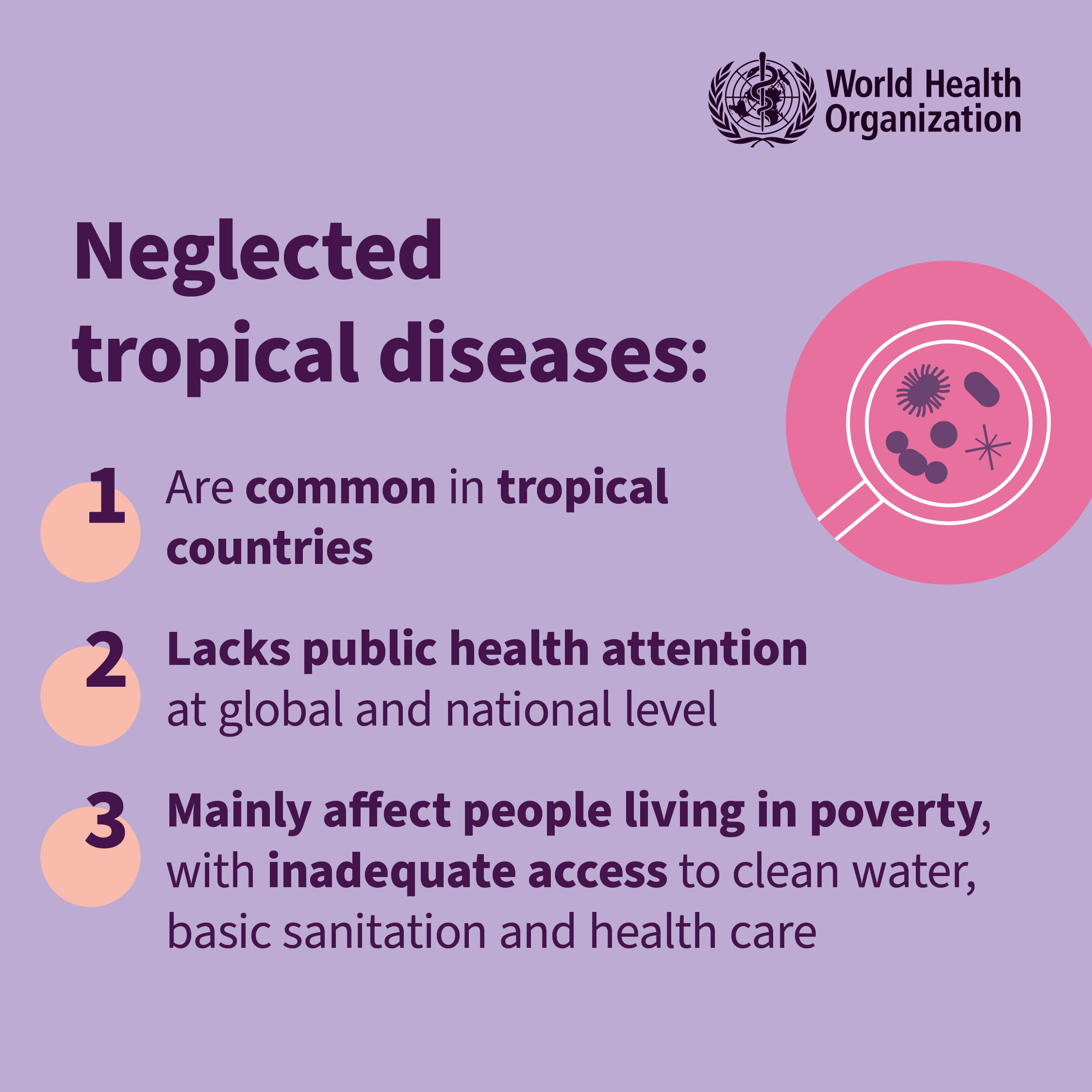Neglected Tropical Diseases (NTDs)

- 10 Jun 2025
In News:
Current Global Progress
- As of May 2025, 56 countries have eliminated at least one NTD, aligned with WHO’s 2030 target (100 countries).
- Between Jan 2023 – May 2025, 17 countries were officially acknowledged by WHO for NTD elimination.
- World NTD Day: Observed annually on 30th January.
What Are NTDs?
- NTDs are a group of infectious diseases affecting over 1 billion people, mainly in tropical and poor regions.
- Caused by parasites, bacteria, viruses, fungi, or toxins.
- Common NTDs include:
- Lymphatic Filariasis (Elephantiasis)
- Onchocerciasis (River Blindness)
- Schistosomiasis
- Soil-transmitted helminths
- Trachoma, Dengue, Kala-azar (Visceral Leishmaniasis)
Impact of Official Development Assistance (ODA) Cuts
- Major donors like the US and UK have withdrawn NTD funding:
- USAID previously provided US$ 1.4 billion, supporting 3.3 billion treatments across 26 countries, helping 14 of them eliminate at least one NTD.
- UK ended its ‘Ascend’ NTD programme in 2021.
WHO Warning:
- On 10 April 2025, WHO cautioned that over 70% of country offices reported health service disruptions due to ODA cuts.
- NTD services have been disrupted at levels similar to peak COVID-19.
Climate Change & Emerging Threats
- Climate change is worsening the NTD burden:
- Dengue declared a Grade 3 Emergency in 2024:
- 14 million cases, 10,000 deaths across 107 countries.
- Geographical expansion of vector-borne NTDs continues.
- Dengue declared a Grade 3 Emergency in 2024:
Public-Private Partnerships
- Pharma companies have donated US$ 12 billion+ worth of drugs (2011–2025), including: GSK, Pfizer, Sanofi, Merck, Bayer, Novartis, Johnson & Johnson, among others.
Recent Global Action
- At the 78th World Health Assembly (May 2025):
- Two NTD-related resolutions adopted:
- Eradication of Dracunculiasis (Guinea Worm)
- Control of Skin-related NTDs
- Two NTD-related resolutions adopted:
Way Forward
- Strengthen nationally owned, sustainable NTD programmes.
- Ensure alternative funding and service delivery mechanisms.
- Prevent reversal of hard-won gains and protect vulnerable communities from deeper health inequities.
